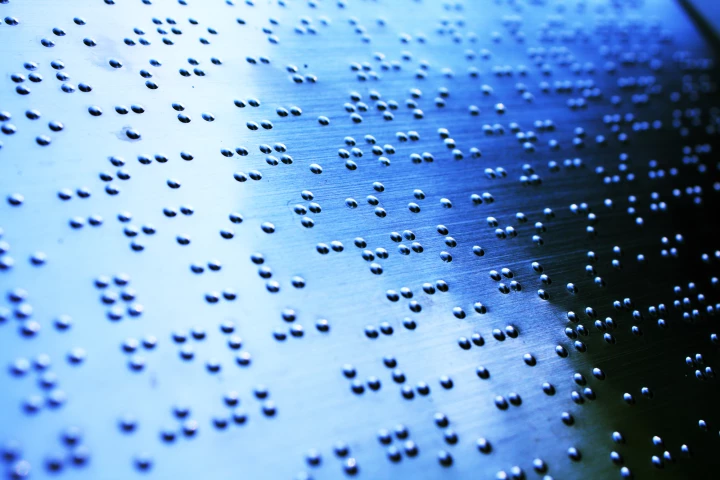Braille
-
It can be difficult for blind people to learn to read braille, as they don't have any way of seeing which character the dots that they're feeling represent. That's where the BrailleWear glove comes in, as it verbally tells them.
-
For people who rely on Braille, reading displays and signs in public can be a challenge, but a new system could help. HaptiRead is a haptic feedback device that uses ultrasound pulses in precise patterns to reproduce Braille text in midair.
-
Blind readers will likely be familiar with refreshable braille displays, in which raised dots rise and fall from a flat surface in order to form braille characters. A new material, however, could make such displays cheaper and more useful than ever.
-
Though sets of colorful building bricks made of plastic can usually keep the kids entertained for hours at home, Lego is also used in the classroom. The Lego Foundation and the Lego Group have now unveiled some special bricks aimed at helping blind kids to learn braille through play.
-
According to ELIA Life Technology, less than one percent of visually-impaired people can read braille. It's quite difficult to master, with users reportedly taking up to 10 months to learn the alphabet. The company's new ELIA Frames system, however, can apparently be learned in just three hours.
-
To address declining braille literacy rates amongst the blind and visually impaired, a team from the Harvard Innovations Lab has devised an innovative system that allows someone to independently learn braille without the guiding hand of a trained teacher.
-
A pair of researchers at Rutgers University School of Engineering came up with a way of improving the situation for students at a training center for the blind and visually impaired in New Brunswick by 3D-printing detailed braille maps of the facility.
-
Suppose you had a tablet that only displayed one line of text at a time. It would be pretty frustrating, but it's a limitation that blind users of braille-displaying devices are faced with constantly. Thanks to new technolog, however, full-page braille tablets could soon be on their way.
-
Researchers have developed a glove that teaches users Braille, all while focusing on unrelated activities. The wearable computer uses vibrating motors sewn into the knuckles, and was found to assist in developing motor skills in participants without focusing on the movement of their hands.
-
UK-based mobile phone company OwnFone has launched what it says is the world’s first commercially-available braille mobile phone. The OwnFone is a simple, light and low-cost device that can be set up with braille quick-dial buttons. It is customized by the user before being 3D-printed by OwnFone.
-
Researchers from the Faculty of Engineering at Israel's Bar Ilan University have developed a prototype contact lens which processes digital images and translates them into tactile sensations to be felt on the user's cornea, allowing them to form a picture of their physical surroundings.
-
Scientists have used a retinal prosthesis to stream visual braille patterns directly onto a blind test subject's retina.
Load More











